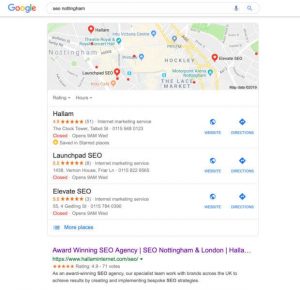Google never sleeps, and neither do competing brands. There’s always a risk in falling through the rankings if you miss a beat in what the competition’s doing or how the industry is changing.
When you want to be discovered, keyword data is a good place to start. The research is complete, the keywords are placed, and results are better than expected.
It’s easy to rest on your laurels once you start seeing great ROI after the initial optimization. Ever wonder if, with all the new research tools being released and all the new data that comes with each purchase, if there was a better way to optimize?
The main keyword might stay the same, but keep an eye out for modifiers to reveal search intent. With each click from search, even for paid search ads, new information about that type of customer is now available.
Those details will show why searches will lead to specific page types and give you an idea for which high-traffic landing pages to optimize. That’s why it’s important to use tools like Google Analytics and Google AdWords to keep an eagle eye on how and why people are visiting your site.
Developing An Optimization Strategy
Investing in SEO means there is a team of experts ready to make the best search experience for Google and, more importantly, potential buyers. When developing a digital marketing strategy, it’s important to use all the data available to you to stay flexible and anticipate changes necessary to stay engaging.
Think of it like this; there are only ten spots on the front page. And if you know that it’s valuable to be the first and most visible search result, so do your competitors. May the best man win, right?
That works if you’re the one on top and catching all the big fish. But fish are fickle. They change their eating patterns, and competitors can pick up on what lures them in before you do. Pretty suddenly, they start reaping the rewards and you’re stuck with the same fish, or maybe even reeling in less. They have optimized and you have not.
With search, new competitors could come out of nowhere with better content, better links, and a better website to steal that rankings you’ve already earned. That’s why it’s essential to have a team of digital PR specialists who keep a pulse on the search industry.
Targeting User Intent
It’s important to pay attention to any new audience insights as it comes to you, or any evolutions in the industry. New technology could mean Google comes out with a new algorithm that can lead to a plummet in rankings.
With improvements in technology comes new competitive advantages and new ideas that you want to get your hands on before the competition does.
Take smartphones for example. In 2007, when the iPhone was released to the public, it was positioned to reinvent the mobile phone. There was just enough technology to create a touchscreen keyboard. Now, 700 million iPhones are in the hands of people worldwide. According to Pew Research Center, nearly two-thirds of Americans own a smartphone.
And with each successive iteration, the smartphone gets better and better. In fact, Google has stated that there are more mobile searches than searches on the desktop.
The most important part about SEO copywriting is whether the copy generates an increase in readership. You may think your website copy is optimized, but keyword popularity changes as consumer intent changes. What words optimize a site for visibility today may not work as well tomorrow.
Prioritizing Content Optimization
It’s important to satisfy users, but you can’t please everyone. Potential buyers will slip through the cracks if you’re not careful. Prioritizing improvements on known user experience weaknesses is the key to meeting the needs of a larger percentage of visitors.
Content is still king, but for websites in 2015, what shapes that content matters now more than ever. This means that functionality, especially on mobile devices, is important for keeping web traffic moving through the pages.
If you want a purchase to begin with a Google search, it’s time to start optimizing for what the customer wants to see. But once they click the link, make sure pages are functional enough to keep them reading.
Building a great user-experience should be an early priority. According to Nielsen, 73 percent of consumers in stores are using their smartphones to search for second opinions on products. Don’t scare them off your hard-earned five-star reviews with bad design.
Nowadays, pages need responsive design that works for smartphones of all sizes, and content needs to have simplified copywriting optimized for mobile displays. As new photos and videos are published, a website might need a facelift to accommodate for the traffic coming in from all platforms.
Remember: other than navigational searches, almost all search queries are questions, even when not phrased as such.
For example, when searching for hotels, potential guests are looking for prices, reviews, directions, and amenities to find the best ROI for their purchase. That means optimizing the landing pages with the benefits your hotel has over the hospitality brands with the right keywords for visibility on for organic and paid search.
A good team of SEO’s will keep up with new developments, analyze the changes, and deliver results to the brand. An evolving competitive landscape for every industry, new audience insights with every click, and new platforms every year means there’s no real rest when it comes to incorporating SEO into digital marketing strategies.
(186)
Report Post





